
Category Archives: Unit 2 Portrait
Filters
13. Arnold Newman:
Arnold Newman was an American photographer who was born in New York City on March 3rd 1918. Newman was best known for his environmental portrait photography.
Alfred Krupp portrait:
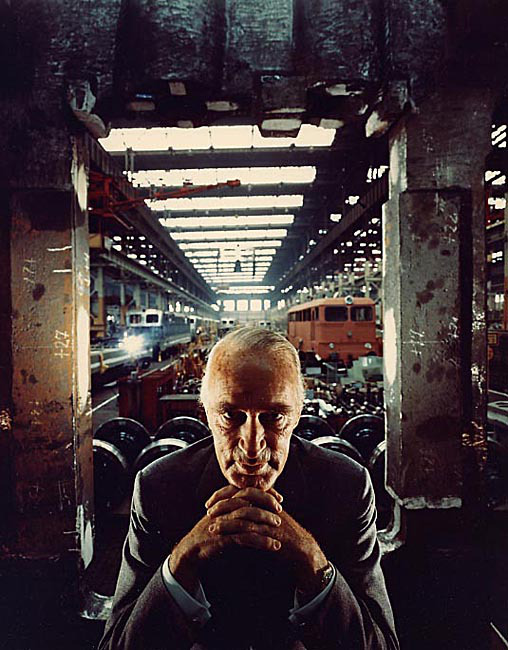
Context:
In 1963, Newman photographed German factory owner, Alfred Krupp whom helped make weapons for the Nazis during the second World war.
Concept:
Newman took this photo in this way to make it look like Krupp was in charge. The image also has a green hue to it that makes Krupp look rather menacing and evil.
Technical:
It is clear that Newman has used a wide-angle lens to capture this image. The photo is also symmetrical and the green lighting shows off the intimidating nature of Krupp.
Visual:
The photo shows an old man (Krupp) with his hands intertwined. The man has his chin resting on his hands. On his face is a grin that makes him look evil. The image shows the man in an old factory that is used to manufacture trains.
Experiment – Aleatoric Photography
Aleatoric Photography:
Aleatoric photography is the incorporation of chance into the process of taking a photograph. The word comes from the Latin word ‘alea’, which means the rolling of dice. “Aleatory” should not be confused with improvisation as it relies purely on chance instead of quick thinking.
One example of aleatoric photography would be smoke photography. Relying heavily on randomness to give it its spark. Photographing smoke is easy although it takes multiple shots for the shapes and swirls of the smoke to look the way the photographer might like. It also depends on what else may be in the photo and how the smoke reacts with the other subjects in the image.
Mood Board: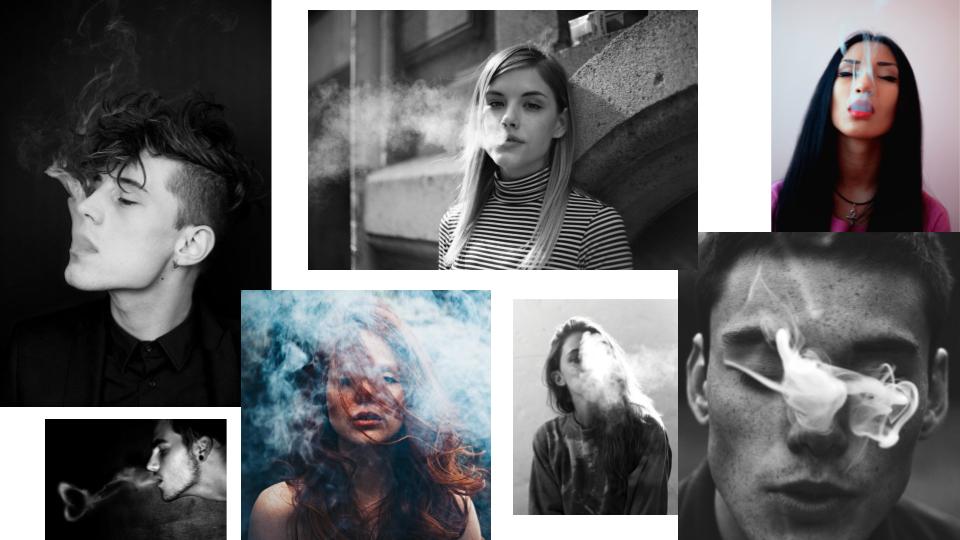
My Response:

Best Images:

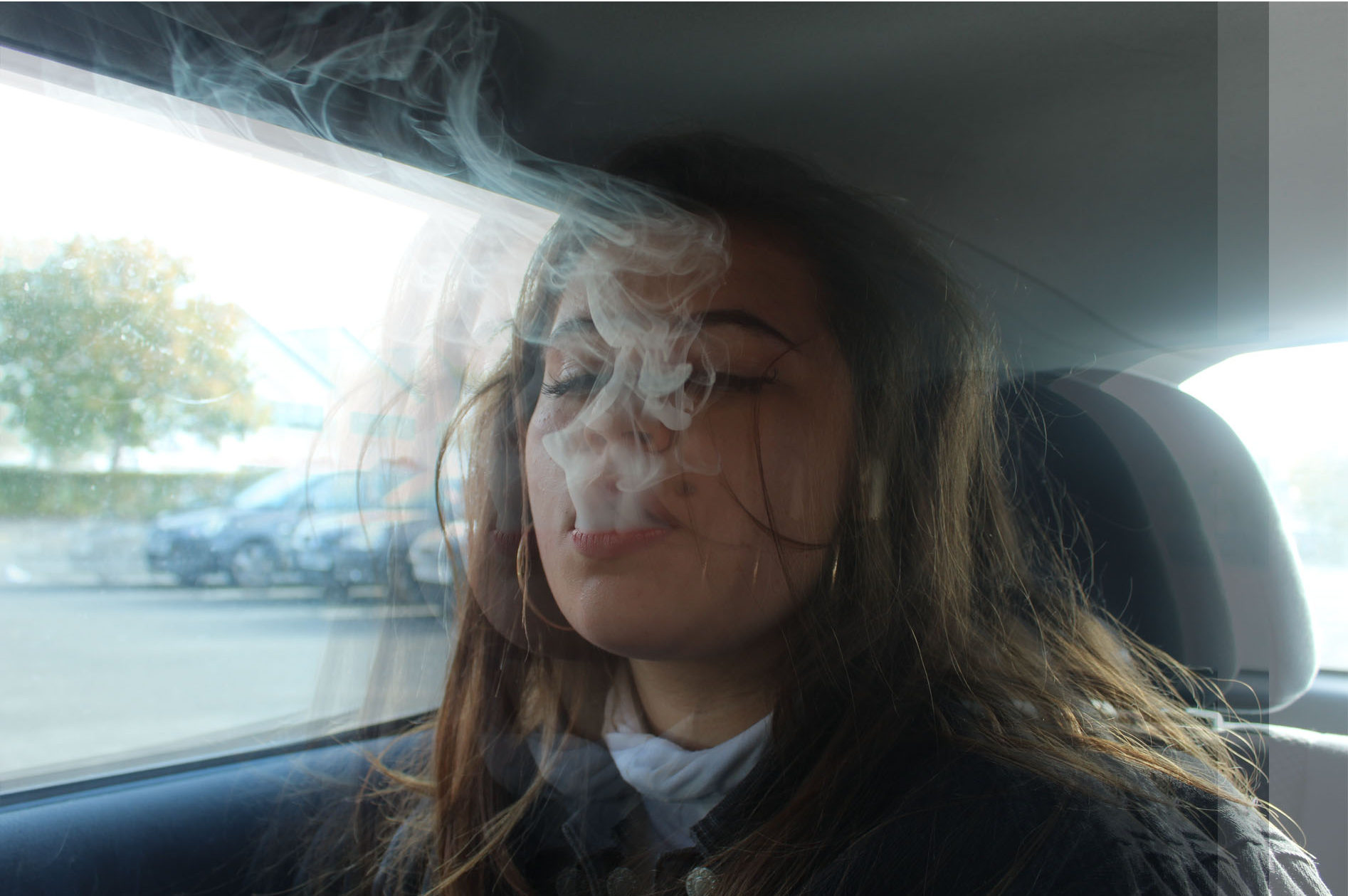
Environmental portraits

An environmental portrait is a portrait captured in the subjects usual environment, such as in their home or workplace. The setting typically illuminates the subject’s life and surroundings. By photographing a person in their natural surroundings, it is thought that you will be able to better illuminate their character, and therefore portray the essence of their personality, rather than their physical features. Photographing a person in their natural surroundings will make the subject feel more comfortable so they will express themselves more, as opposed to in a studio, which can be a rather intimidating and an artificial experience. The background is an important aspect in environmental portraiture and is used to show further information about the person being photographed. Small apertures and a large depth of field are mostly used in this type of photography. The symbolism expressed through the various elements in the background are effective when taking an environmental portrait.
Arnold Newman
Arnold Newman is widely renowned for pioneering and popularizing the environmental portrait. With his method of portraiture, he placed his sitters in surroundings representative of their professions, aiming to capture the essence of an individual’s life and work. Though this approach is commonplace today, his technique was highly unconventional in the 1930s when began shooting his subjects as such. He is also known for his carefully composed, abstract still lifes.
Born in Manhattan, Newman grew up in Atlantic City, New Jersey and later moved to Miami Beach, Florida. In 1936, he studied painting and drawing at the University of Miami. Unable to afford continuing after two years, he moved to Philadelphia to work for a studio, making 49-cent portraits in 1938.
Newman returned to Florida in 1942 to manage a portrait studio in West Palm Beach. Three years later, he opened his own business in Miami Beach.
In 1946, Newman relocated to New York, opened Arnold Newman Studios and worked as a freelance photographer for Fortune, Life, and Newsweek. Though never a member, Newman frequented the Photo League during the 1940s.


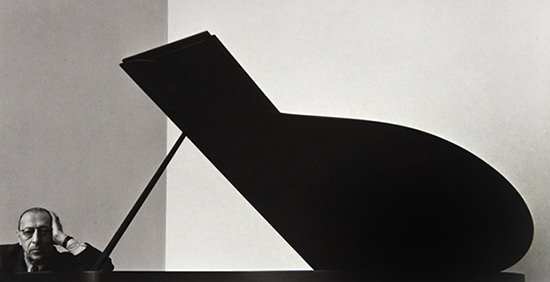
My chosen image:

The pictures shows an old man, sitting right at the front of the picture, looking into the camera while resting his chin on his crossed over fingers. Behind him, looks like a train station or factory, with machinery placed everywhere, and lights on the ceiling going back in a straight line. The image itself seems to be rather symmetrical, he’s sat in the middle of the image at the front, behind hims seems to be a window or doorway of some sort which almost resembles a boarder, and the lights and beams on the ceiling go down in straight parallel lines.
The man in this picture is Alfred Krupp, a German industrialist who supported the Nazi party and profited from the use of slave labor during World War ll. Despite being convicted of his crimes and sentenced to 12 years in prison, he was pardoned and only served the minimum of 3 years. In 1963, Newsweek magazine commissioned Arnold Newman to take portrait photographs of Krupp. Originally turning down the offer, he came to accept after being reassured by the editor, but promised to make Krupp look like the Devil. After travelling to Frankfurt, associates of Krupp decided to cancel the photo shoot, due to Newman looking a ‘bit Jewish’. In order to save the shoot, he demanded that his portfolio be shown to their boss, and it worked. The photo shoot took place in Kruppworks factory, and Newman used lighting and the scenery to portray Krupp as an evil man, with ghastly shadows and a green colour cast. Thankfully, the time it took to get the photos developed gave him time to fool Krupp and his associates, as they would have been furious with the outcome.
Lately people have been labeling my Krupp picture as the greatest photographic “knife job” ever done on anybody. But I’m not so sure. I am convinced that any photographic attempt to show the complete man is nonsense. We can only show, as best we can, what the outer man reveals. The inner man is seldom revealed to anyone, sometimes not even the man himself.
Krupp was a very evil man. You can read all about him in several books, especially the Arms of Krupp by Manchester. Krupp claimed during the Nuremberg Trials that he never knew Hitler and that he was a child at the time. This was bullshit! He grew up supporting Hitler. He married one of the Krupp women and Hitler allowed him to adopt the Krupp name.
He ran the Kruppworks using slave labor. He fed them half the calories Hitler allowed for no reason other than there was so much slave labor available. So what? If they got too weak to work he just simply slipped them off to Auschwitz and the gas chambers. Krupp still had slave labor living in his castle at the time I photographed him!
Later on in the War he built factories right next to the concentration camps where all he had to do when they got too weak to work was walk them into the gas chambers. It was that simple. This “slave labor” were people like you and I. ~ Arnold Newman
Environmental Portraits
An environmental portrait is a portrait executed in the subject’s usual environment, such as in their home or workplace, and typically illuminates the subject’s life and surroundings.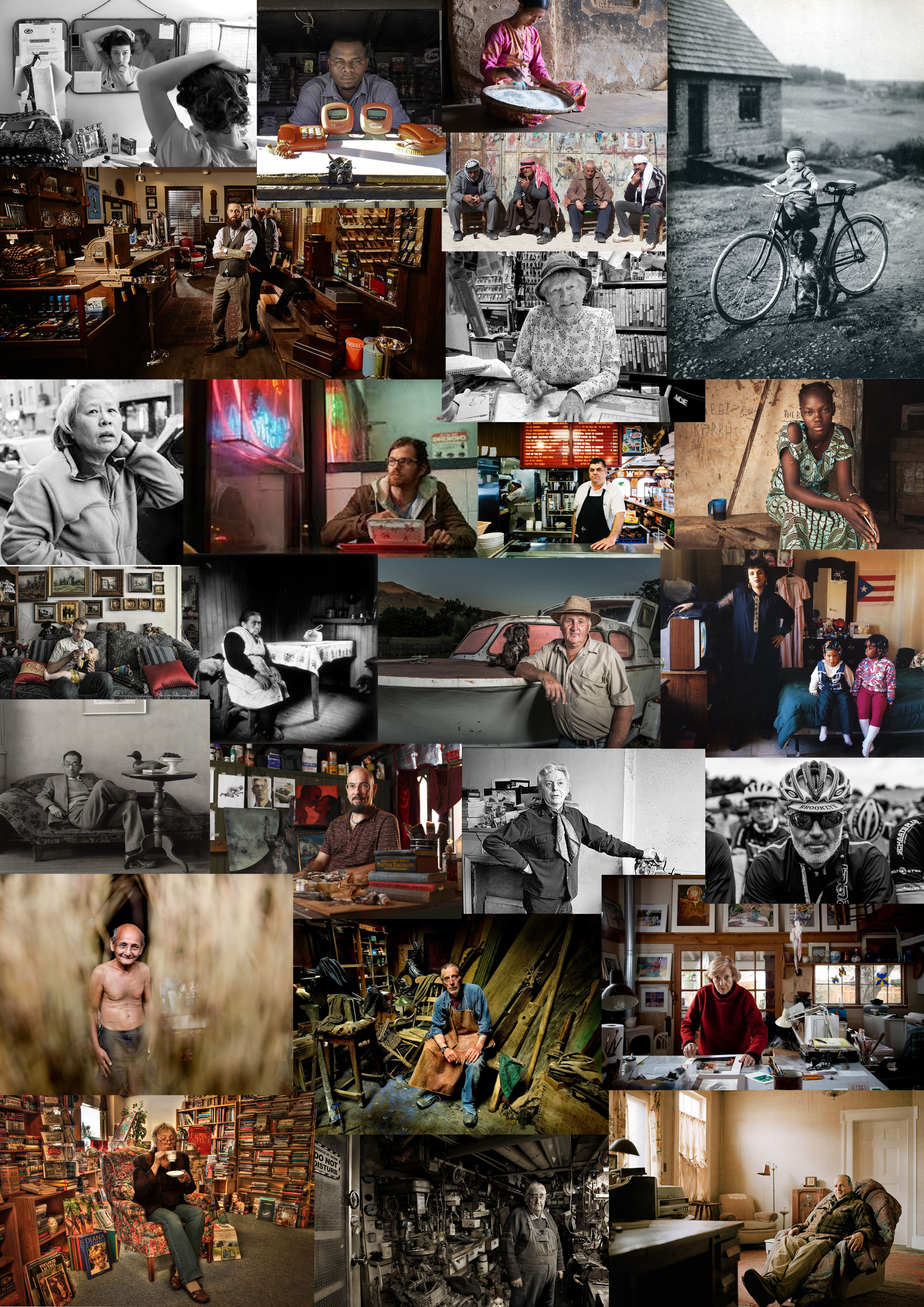
The Golden Ratio
While the rule of thirds is the most widely known composition rule, there’s another principal that plays a big role in composing images with that wow factor; the golden ratio. Google “golden ratio” and you’ll immediately be assaulted by mathematical principles and numbers. While its basis does lie in math and numbers, the golden ratio is really about what the human eye sees, and composing an image that immediately demands attention. You don’t have to be a math whiz to understand the golden ratio. The golden ratio is actually a number. It’s found by taking a line (or sometimes another shape) and dividing it into two parts. When a line or shape is divided into two parts based on the golden ratio, it will be divided in such a way that, if you divided the length of the longest section by the length of the smallest section, it would be equal to the original length of the shape divided by the longest section. The golden ratio is perfectly balanced, and that balance makes it pleasing to the human eye. Because of this, the golden ratio crosses from math over into art. The Mona Lisa and The Last Supper, for example, are both paintings that use this golden ratio. In photography, the golden ratio can be used to identify the main subject while still leading the viewer’s eye through the entire image.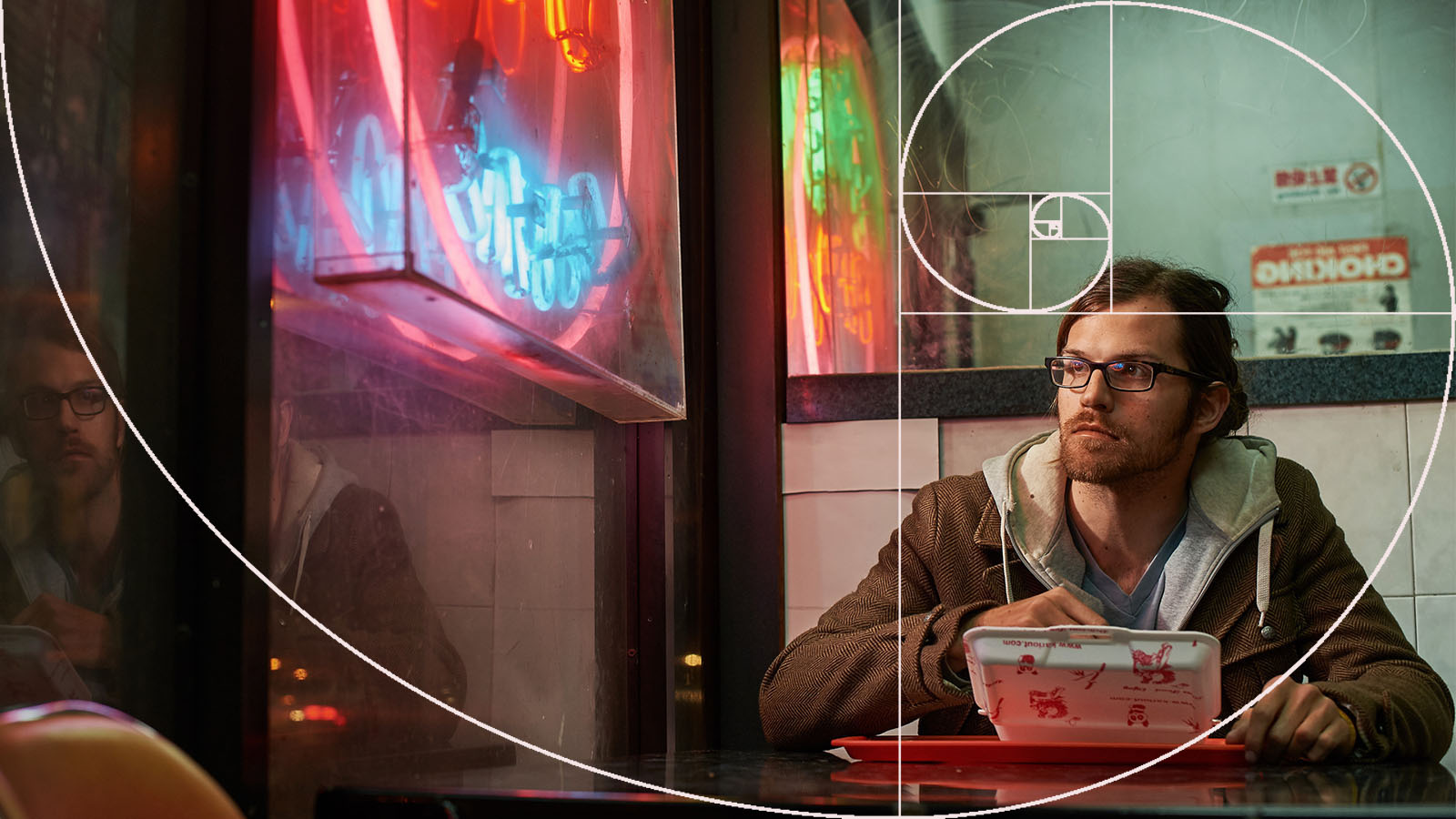
What are environmental portraits?
What is environmental portraiture?
An environmental portrait is a portrait taken of a person or people in a situation that they live in and a place that says something about who they are. It is often a place of work, rest or play. Images which are quite natural, yet a little staged by the subject making eye contact with the camera. They are making a connection with the camera.
Mood Board:
This mood board displays the general sense of what environmental portraiture is. They all follow a general theme by being staged and the subject making eye contact with the camera. There is a sense of place with the people being in their work, there is a sense of connection by the photographer letting us into the life of the person.

Fibonacci Spiral:
While the rule of thirds is the most widely known composition rule, there’s another principal that plays a big role in composing images with that wow factor; the golden ratio. While its basis does lie in math and numbers, the golden ratio is really about what the human eye sees, and composing an image that immediately demands attention. This photo also follows the Fibonacci spiral, it follows the composition which makes this a very effective and balanced image.
The golden ratio is actually a number. It’s found by taking a line (or sometimes another shape) and dividing it into two parts. When a line or shape is divided into two parts based on the golden ratio, it will be divided in such a way that, if you divided the length of the longest section by the length of the smallest section, it would be equal to the original length of the shape divided by the longest section.
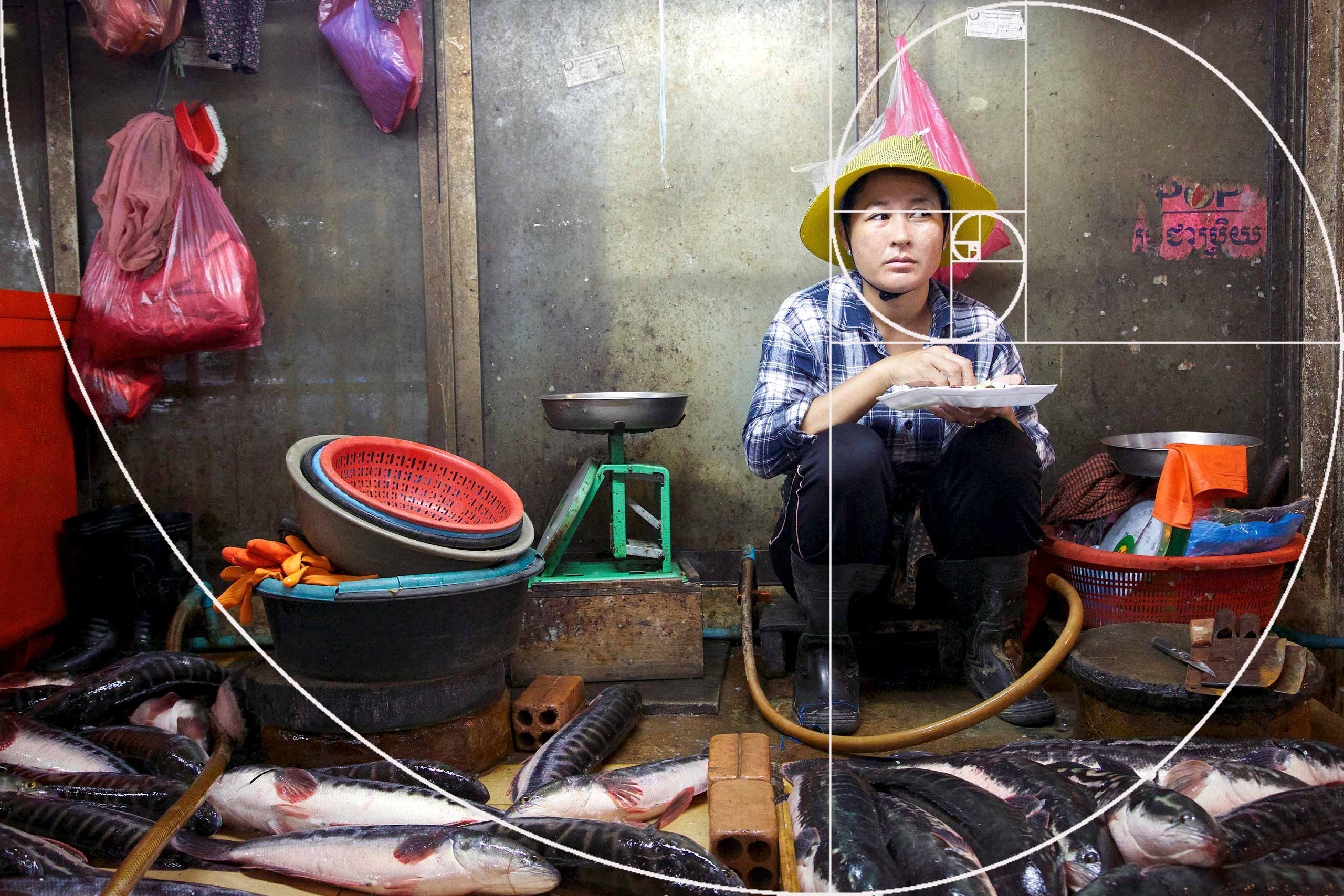
Useful videos about environmental portraiture:
Alfred Krupp – Arnold Newman
Initial Response:
I personally find that the image is over saturated in certain areas, while this adds a sense of drama to the image, i personally find that it leaves the image looking rather tacky. While I dislike the amount of saturation in the photo due to the result looking rather messy, i like the sense of seriousness/drama that it creates. I like the background elements of the photo more than the foreground. While it is more cluttered than the foreground, it has a lot of negative white space which i find balances out the background of he image as a whole. i believe it also addresses the issue of over saturation and i believe that if there was more negative white space in the foreground it would result in an overall more balanced image.
Technical:
It looks as though the image was taken using a small aperture since a lot of the image is in focus. It looks as though a rather long shutter speed was used due to the color depth as well as the fact that it looks as though the photo is taken using a small aperture and so a long shutter speed would be required in order for the photo to be properly exposed. The photo overall looks to be rather warm in color temperature.
Visual:
The photo features some strong colors, particularly some strong oranges as well as accentuating the olive tones in his skin helping to add to the dramatic, evil look of the ex Nazi war criminal.

Arnold Newman – Portrait photography

Emotional response: My response to first seeing the photo was that the man in the foreground is quite intimidating and mysterious. There are big differences between light levels, saturation, and contrast within the photo. The man is wearing a suit which shows that he is quite an important person as suits were more expensive than today.
Visual: The man in the middle looks around 75-80 years old, he is lent forward with his hands together (with his fingers intertwined) and is resting his chin on them. The man is less lit than the background which gives a sense of cruelty and mystery about him. He is also in the stereotypical villain pose which makes him more easily associated with being a bad person.
The background also has a lot of contrast, this helps distinguish the trains from the production lines and makes the whole photo more attractive to the eye as it is more colourful.
Technical: The windows at the top let in more light into the photo as well as giving it more structure as they consist of strong lines. As they windows get further away they appear smaller which draws the eye into the centre of the photo.
The photo is symetrical through the middle, This balance makes it more attractive as people instinctively prefer symetrical objects/things.
The photo was taken with a shorter exposure. This was probably done to avoid overexposing the background; which is more lit than the foreground. This results in the foreground being darker, which works for this photo as it makes the man look more sinister (which was the intent).
Conceptual: The subject of the photo was Alfred Krupp. He was made to look as sinister as possible in this photo because the photographer (Arnold Newman) was Jewish and Alfred Krupp was a nazi, so this photo was Arnold’s ‘bit of revenge’.
Image Analysis:Environmental Portraits:Arnold Newman
 Emotional
Emotional
This portrait provides me with a sense of intimidation and lack of authority. Yet I do think it is a very impressive photo with a message behind it. I like the contrast between the dark area at the front and the light area at the back, which adds great amount of depth. although the photo is busy, I can’t get away from the fact that the man (Krupp) is the focal point, his stern looking face is hard to move away from.
Visual
There is a clear foreground and background which are emphasized by the change in light. In the foreground there is a Caucasian man aged around 65, wearing a suit, with his hands joint together and his chins resting on top, he has little to no emotion on his face, the dark areas around his eyes create a demonic silhouette. In the background it’s light which is flooding in via the windows on the ceiling, below there are trains of different colours and sizes. The warehouse behind him seems eerily quiet and dingy, there doesn’t seem to be an areas of interested in terms of beauty.
Technical
Their is a clear leading eye in this photo, from the man your eye is lead by the symmetry of the windows, this also represents pattern and order within the photo, this creates a large depth of field. The exposure is very well down and is correctly balanced between the dark and light areas. In the background Newman has used natural lighting, whereas to highlight Krupp’s face it appears he has used natural lighting this is indicated by the shadowing on some parts and glowing light on other parts of him, his light may have occurred via an office lamp. Krupp’s direct eye contact with the camera has a big impact making it much more personal and its as if hes staring you down creating more and more intimidation.
Conceptual
The photo was taken by Arnold Newman, a Jewish photographer in 1963. Alfred Krupp was hesitant at first to have his photo taken by Newman but he eventually came round to the idea and thus this photo was taken. Krupp in World War II held much power as he took over his fathers company which he then used as a place to assign Jewish prisoners at the time to work there under slave labour to create Nazi weapons. Krupp’s background story is clearly represented in the photo by Newman and the fact that he was Jewish emphasizes his intentions even further. He made Krupp to look like a demonic figure with the lighting, expression and body language to expose the injustice of the Jews and how much evil people in the time of the war exploited them and such horrific factories. As well as that the rule of thirds also create a sense of structure, which symbolises the the strict regime of the Nazi’s and how they locked up Jews in tight uniform concentration camps similar to how Krupp forced them to work in rows in his factories for hours on end.
